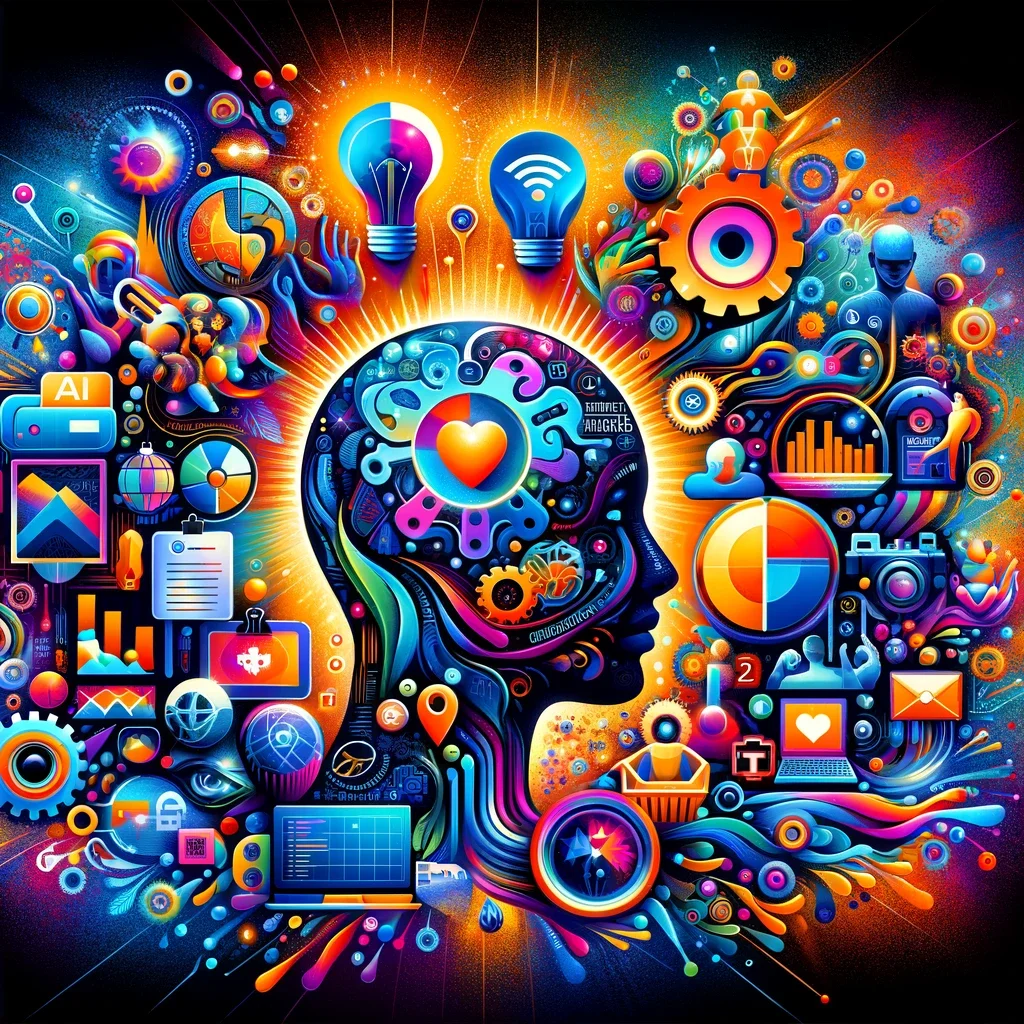Many businesses are now leveraging Chatbots and Conversational AI to improve their customer service experience. These technologies provide an automated way to interact with customers, resolve issues, and provide information in a timely manner. With Chatbots and Conversational AI, companies can offer 24/7 support, reduce response times, and handle a high volume of inquiries simultaneously.
Furthermore, these tools can save businesses costs by reducing the need for human customer service agents for simple queries. Chatbots can also provide personalized recommendations based on customer preferences and past interactions. However, it is crucial for companies to ensure that these Chatbots are well-designed and continuously monitored to prevent customer dissatisfaction and potential reputational damage.

Key Takeaways:
- Improved Customer Experience: Chatbots and conversational AI can provide instant, 24/7 customer service, enhancing the overall customer experience.
- Increased Efficiency: They can handle a high volume of customer inquiries simultaneously, reducing wait times and improving efficiency.
- Personalization: Chatbots can gather and remember customer data to provide personalized recommendations and solutions.
- Cost-effective: Implementing chatbots can significantly reduce operational costs by automating routine customer service tasks.
- Data-driven Insights: Conversational AI can collect and analyze data from customer interactions, providing valuable insights for improving products and services.
Fundamental Concepts of Chatbots and AI
Clearly, to understand the world of chatbots and conversational AI for customer service, it is important to grasp the fundamental concepts that drive these technologies. Chatbots are AI-powered programs designed to simulate conversation with human users, providing automated responses to their queries or requests. On the other hand, conversational AI goes a step further by using natural language processing and machine learning to enable more sophisticated interactions between users and machines.
- "Explain the concept of chatbots in customer service."
- "What is the role of AI in chatbots?"
- "Define conversational AI and its relevance in customer service."
What Are Chatbots?
What sets chatbots apart from traditional software interfaces is their ability to engage users in a conversational manner, emulating human interaction. These AI-driven tools can assist customers with common queries, provide personalized recommendations, and even execute tasks such as booking reservations or making purchases seamlessly.
- "How do chatbots enhance customer service?"
- "List some benefits of using chatbots in customer support."
- "Explain the importance of chatbots in modern businesses."
The Basics of Conversational AI
The field of Conversational AI focuses on developing systems that can understand, process, and respond to human language in a way that feels natural and human-like. By leveraging technologies such as natural language understanding, machine learning, and sentiment analysis, conversational AI platforms can interpret user intent and deliver contextually relevant responses, enabling more personalized and effective customer interactions.
- "What are the key components of Conversational AI?"
- "Explain the role of machine learning in Conversational AI."
- "Describe how sentiment analysis enhances Conversational AI."
The Basics of Conversational AI
The field of Conversational AI focuses on developing systems that can understand, process, and respond to human language in a way that feels natural and human-like. By leveraging technologies such as natural language understanding, machine learning, and sentiment analysis, conversational AI platforms can interpret user intent and deliver contextually relevant responses, enabling more personalized and effective customer interactions.
– “What technologies are used in Conversational AI?”
– “How does machine learning improve Conversational AI systems?”
Design and Development
1. Design a chatbot interface for a customer service scenario.
2. Develop conversation flows for a chatbot handling product inquiries.
3. Implement a chatbot feature to schedule appointments.
4. Test different natural language understanding models for chatbot training.
5. Create a chatbot response template for common customer service queries.
Building a Chatbot: Tools and Platforms
1. Explore the features of popular chatbot development platforms like Dialogflow and Watson.
2. Compare the integration capabilities of different chatbot frameworks.
3. Design a chatbot conversation flow using a visual builder tool.
4. Customizing pre-built chatbot templates for specific business needs.
Designing and developing a chatbot involves careful consideration of the user experience, conversation flow, integration capabilities, and scalability. Choosing the right tools and platforms is crucial in building a successful chatbot solution. Platforms like Dialogflow and Watson offer robust features for natural language understanding and conversation management, while frameworks like Rasa provide more flexibility and control over the development process. Visual builder tools simplify the design process, allowing developers to create complex conversation flows with ease. Customizing pre-built templates can speed up development time and tailor the chatbot to specific business requirements.
Natural Language Processing in AI
1. Explain the concept of natural language processing and its importance in chatbots.
2. Demonstrate the use of language models like BERT for conversational AI.
3. Develop a custom intent classification model for chatbot training.
4. Implement named entity recognition for extracting relevant information from user inputs.
Designing a chatbot that effectively processes natural language is imperative for providing seamless customer service. Natural language processing (NLP) enables chatbots to understand and respond to user queries in a more human-like manner. Language models like BERT have revolutionized conversational AI by providing contextual understanding of user input. Developing custom intent classification models tailored to specific business domains can improve chatbot accuracy and efficiency. Named entity recognition allows chatbots to extract important information such as dates, locations, and product names from user messages, enhancing the overall user experience.
Integrating Chatbots into Customer Service
Unlike traditional customer service methods, integrating chatbots into customer service processes can offer improved efficiency, scalability, and customer satisfaction. Chatbots provide instant responses to customer queries, handle multiple requests simultaneously, and are available 24/7. However, successful integration requires careful planning and execution to ensure a seamless customer experience. In this chapter, we will explore the steps involved in integrating chatbots into customer service and the best practices to follow for a successful implementation.
Identifying Suitable Service Scenarios
Identifying suitable service scenarios is crucial for determining where chatbots can add value to your customer service operations. By analyzing common customer queries, transactional tasks, and support issues, you can identify the areas where chatbots can effectively assist customers. Examples of suitable service scenarios include answering FAQs, processing simple transactions, providing order status updates, and initiating customer support requests.
- What are some common customer queries that chatbots can assist with?
- How can chatbots be used to streamline transactional tasks?
- In what ways can chatbots help provide customer support?
Best Practices for Implementation
Implementing chatbots successfully requires following best practices to ensure a seamless and effective customer experience. Prioritize user-centric design by creating conversational flows that are intuitive and user-friendly. Integrate chatbots with your existing customer service channels to provide a consistent experience across all touchpoints. Regularly monitor and analyze chatbot performance to identify areas for improvement and optimize its capabilities. Train your chatbot with up-to-date information and provide fallback options for scenarios where the chatbot is unable to assist.
- How can user-centric design principles enhance the chatbot experience?
- What are the benefits of integrating chatbots with existing customer service channels?
- Why is it important to monitor and analyze chatbot performance regularly?
Identifying suitable service scenarios is critical for maximizing the effectiveness of chatbots in customer service. By pinpointing the areas where chatbots can provide the most value, businesses can streamline processes and enhance customer satisfaction. Following best practices for implementation is important to ensure that chatbots meet customer expectations and contribute positively to overall service delivery.
Benefits of Chatbots and Conversational AI
1. How can chatbots enhance customer experience?
2. What are the cost-effectiveness and efficiency benefits of using conversational AI?
3. Share examples of improved customer service with chatbots.
4. How do chatbots save time and resources for businesses?
5. Explain the role of chatbots in boosting customer satisfaction.
Enhanced Customer Experience
1. How do chatbots personalize customer interactions?
2. Share examples of increased engagement with AI-based customer service.
On the frontlines of customer service, chatbots and Conversational AI play a crucial role in enhancing the overall customer experience. By providing instant responses to queries, offering personalized recommendations, and guiding users through various processes, chatbots can significantly improve customer satisfaction levels. Companies can leverage chatbots to streamline communication, resolve issues promptly, and ensure round-the-clock support, ultimately leading to enhanced customer loyalty and brand reputation.
Cost-Effectiveness and Efficiency
1. How do chatbots reduce operational costs for businesses?
2. Share examples of efficiency gains through automated customer support.
Efficiency is at the core of the benefits offered by chatbots and Conversational AI in customer service operations. By automating routine tasks, handling multiple inquiries simultaneously, and providing instant solutions, chatbots help businesses save time and resources. This automation not only enhances operational efficiency but also leads to significant cost savings in the long run. With chatbots handling repetitive inquiries, human agents can focus on more complex issues, further optimizing the overall customer service process.
Benefits of integrating chatbots and Conversational AI in customer service operations are vast and impactful. These technologies not only enhance customer experience through personalized interactions and increased engagement but also offer substantial cost savings and operational efficiency for businesses. By leveraging chatbots, companies can improve customer satisfaction, streamline communication, and optimize resource allocation, ultimately driving growth and success in a competitive market landscape.
Challenges and Limitations
1. What are the common challenges faced by chatbots in customer service?
2. How do chatbots handle complex customer inquiries?
3. Can chatbots effectively handle emotional customer interactions?
4. What are the limitations of chatbots in providing personalized customer support?
5. How do chatbots struggle with understanding regional dialects and accents?
Keep in mind that while chatbots and conversational AI are powerful tools for customer service, they do come with their own set of challenges and limitations. These factors can impact the effectiveness and efficiency of these systems in engaging with customers and resolving issues.
Understanding the Limitations of Chatbots
1. Why do chatbots struggle with nuanced language and ambiguous queries?
2. How do chatbots handle situations outside their programmed knowledge base?
3. Can chatbots effectively recognize and respond to sarcasm or humor in customer interactions?
4. What are the limitations of chatbots in handling sensitive customer data?
5. How do chatbots address ethical concerns in customer service interactions?
For a deeper understanding of the limitations of chatbots, it is important to recognize that these systems have inherent constraints when it comes to interpreting and responding to human language nuances, especially in complex or emotionally charged scenarios. While chatbots can be programmed to handle a wide range of queries, they may struggle with understanding context, humor, or subtle cues that a human agent would easily grasp. This limitation can lead to frustration for customers seeking personalized and empathetic support.
Overcoming Technical Challenges
1. How can companies improve chatbot accuracy and response times?
2. What role does machine learning play in enhancing chatbot capabilities?
3. Can chatbots effectively integrate with existing CRM systems for a seamless customer experience?
4. What are the best practices for training chatbots to handle a diverse range of customer inquiries?
5. How do companies ensure data security and privacy in chatbot interactions?
Challenges in the technical implementation of chatbots include ensuring accuracy, responsiveness, and seamless integration with existing systems. Companies need to leverage machine learning techniques to continuously improve chatbot performance and provide more contextually relevant responses to customers. By investing in training and data security measures, businesses can overcome technical hurdles and enhance the overall customer service experience.
Technical challenges such as accuracy, responsiveness, and integration with existing systems are vital considerations for companies implementing chatbots in customer service.

Measuring Success and Metrics
To effectively measure the success of chatbots and conversational AI in customer service, businesses need to establish clear metrics and key performance indicators (KPIs). These metrics help gauge the performance of the chatbots, identify areas for improvement, and track the impact on customer satisfaction and operational efficiency.
- Generate prompts for analyzing chatbot performance.
- Evaluate chatbot response time and accuracy.
- Monitor user engagement and interaction with the chatbot.
- Measure the resolution rate of customer queries by the chatbot.
- Track the number of escalations to live agents.
Key Performance Indicators (KPIs) for Chatbots
Metrics play a crucial role in evaluating the effectiveness of chatbots. Key performance indicators (KPIs) help businesses quantify the impact of chatbots on customer service processes. KPIs such as response time, resolution rate, customer satisfaction score, and escalation rate provide valuable insights into the performance of chatbots and assist in optimizing their functionality.
- Identify KPIs for measuring chatbot performance.
- Evaluate response time and resolution rate as KPIs.
- Analyze customer satisfaction score as a KPI.
- Track escalation rate to live agents as a KPI for chatbots.
- Measure operational cost savings as a KPI for chatbot implementation.
User Satisfaction and Feedback Analysis
Measuring user satisfaction and feedback is imperative for understanding how customers perceive and interact with chatbots. Analyzing feedback helps businesses identify pain points, improve the chatbot’s performance, and enhance the overall customer experience. By collecting and analyzing user feedback, businesses can gain valuable insights into customer preferences, behavior patterns, and areas for enhancement.
- Analyze user satisfaction and feedback metrics for chatbots.
- Collect feedback to enhance chatbot performance.
- Monitor user sentiments and reactions towards the chatbot.
- Identify common issues from user feedback for improvements.
- Measure the impact of user feedback on chatbot refinement.
Measuring user satisfaction and feedback is crucial for optimizing chatbot performance and enhancing the overall customer experience. By actively analyzing user feedback, businesses can make informed decisions to improve chatbot functionalities, address customer concerns, and drive engagement. This data-driven approach allows companies to continuously refine their chatbot strategies and deliver more personalized and efficient customer service.
Another important aspect to consider is the sentiment analysis of user feedback. Understanding whether users are expressing positive, negative, or neutral sentiments can help businesses tailor their chatbot responses to better meet customer expectations and improve overall satisfaction levels. Additionally, monitoring feedback trends and identifying recurring issues can guide businesses in proactively addressing common pain points and optimizing the chatbot’s performance.
The Future of Chatbots and Conversational AI in Customer Service
Once again, chatbots and conversational AI are poised to reshape the landscape of customer service in the near future. As technology continues to advance, these AI-powered solutions are expected to play an even more significant role in improving customer experiences, streamlining support processes, and driving operational efficiencies for businesses across various industries.
- How can chatbots enhance customer interactions?
- What are the latest trends in conversational AI for customer service?
- Ways AI can personalize customer experiences
Advancements in AI and their Implications
Any significant advancements in the field of AI, such as the development of more sophisticated natural language processing (NLP) algorithms and the integration of machine learning models, have direct implications for the capabilities of chatbots and conversational AI in customer service. These advancements enable chatbots to understand and respond to customer inquiries more accurately, learn from interactions to provide more personalized responses, and even anticipate customer needs proactively.
- How are AI algorithms improving chatbot performance?
- Impacts of NLP advancements on conversational AI
Ethical Considerations and Privacy Concerns
Any deployment of AI technologies in customer service raises important ethical considerations and privacy concerns. As chatbots and conversational AI systems handle sensitive customer data and interact with users on a personal level, businesses must prioritize data privacy, transparency in AI decision-making, and adherence to ethical standards to build and maintain trust with their customers.
- Addressing privacy concerns in AI-driven customer service
- Strategies for ensuring ethical AI use in customer interactions
The ethical use of AI in customer service is critical to maintain customer trust and safeguard sensitive data. Transparency in AI algorithms and practices is key to addressing privacy concerns and ensuring ethical decision-making in customer interactions.
Summary of Chatbots and Conversational AI Insights
It is evident from the current trends and developments that chatbots and conversational AI have become indispensable tools for enhancing customer service experiences. Businesses are leveraging these technologies to provide instant support, automate routine tasks, gather valuable customer insights, and create more personalized interactions at scale, ultimately leading to improved customer satisfaction and loyalty.
- Key benefits of using chatbots for customer service
- Implementing AI for improved customer engagement
Customer service teams can benefit greatly from the insights provided by chatbots and conversational AI, allowing them to deliver more personalized and efficient support to customers, ultimately leading to higher satisfaction rates and increased loyalty.
The Road Ahead for AI and Customer Service
Implications for the future of AI in customer service are vast and promising. As businesses continue to invest in AI technologies, the capabilities of chatbots and conversational AI will only expand, enabling more seamless interactions, smarter decision-making, and deeper customer insights. The road ahead will see AI playing an even more integral role in transforming the way businesses engage with their customers and deliver exceptional service experiences.
- Predictions for the future of AI in customer service
- Impact of AI advancements on customer service operations
Customer service is on the brink of a significant transformation with AI at the forefront, paving the way for more efficient, personalized, and impactful interactions that drive business growth and customer loyalty.
The Road Ahead for AI and Customer Service
Implications for the future of AI in customer service are vast and promising. As businesses continue to invest in AI technologies, the capabilities of chatbots and conversational AI will only expand, enabling more seamless interactions, smarter decision-making, and deeper customer insights. The road ahead will see AI playing an even more integral role in transforming the way businesses engage with their customers and deliver exceptional service experiences.
- Predictions for the future of AI in customer service
- Impact of AI advancements on customer service operations
Customer service is on the brink of a significant transformation with AI at the forefront, paving the way for more efficient, personalized, and impactful interactions that drive business growth and customer loyalty.
Concerns
It is crucial for businesses to address the ethical considerations and privacy concerns surrounding the use of AI in customer service to maintain trust and credibility with their customers. While AI offers immense potential for enhancing customer experiences, businesses must prioritize data security, transparency, and ethical practices to mitigate risks and build long-lasting relationships with their customer base.
FAQ
Q: What are chatbots and conversational AI for customer service?
A: Chatbots and conversational AI for customer service are automated tools that use artificial intelligence (AI) to interact with customers in a chat format, providing assistance, answering questions, and resolving issues.
Q: How do chatbots improve customer service?
A: Chatbots improve customer service by providing instant responses to customer inquiries, reducing response times, offering 24/7 support, and handling multiple customer interactions simultaneously.
Q: What are the benefits of using chatbots for customer service?
A: The benefits of using chatbots for customer service include cost savings, increased efficiency, improved customer satisfaction, personalized interactions, and the ability to scale support operations easily.
Q: How can businesses integrate chatbots into their customer service strategy?
A: Businesses can integrate chatbots into their customer service strategy by identifying common customer queries, designing conversational flows, integrating chatbots with existing systems, providing training to improve chatbot performance, and continuously monitoring and optimizing chatbot interactions.
What are the limitations of chatbots in customer service?
Despite their advantages, chatbots in customer service have limitations such as the inability to handle complex queries, the risk of providing impersonal interactions, the need for continuous monitoring and maintenance, and the potential for technical errors that may frustrate customers.















